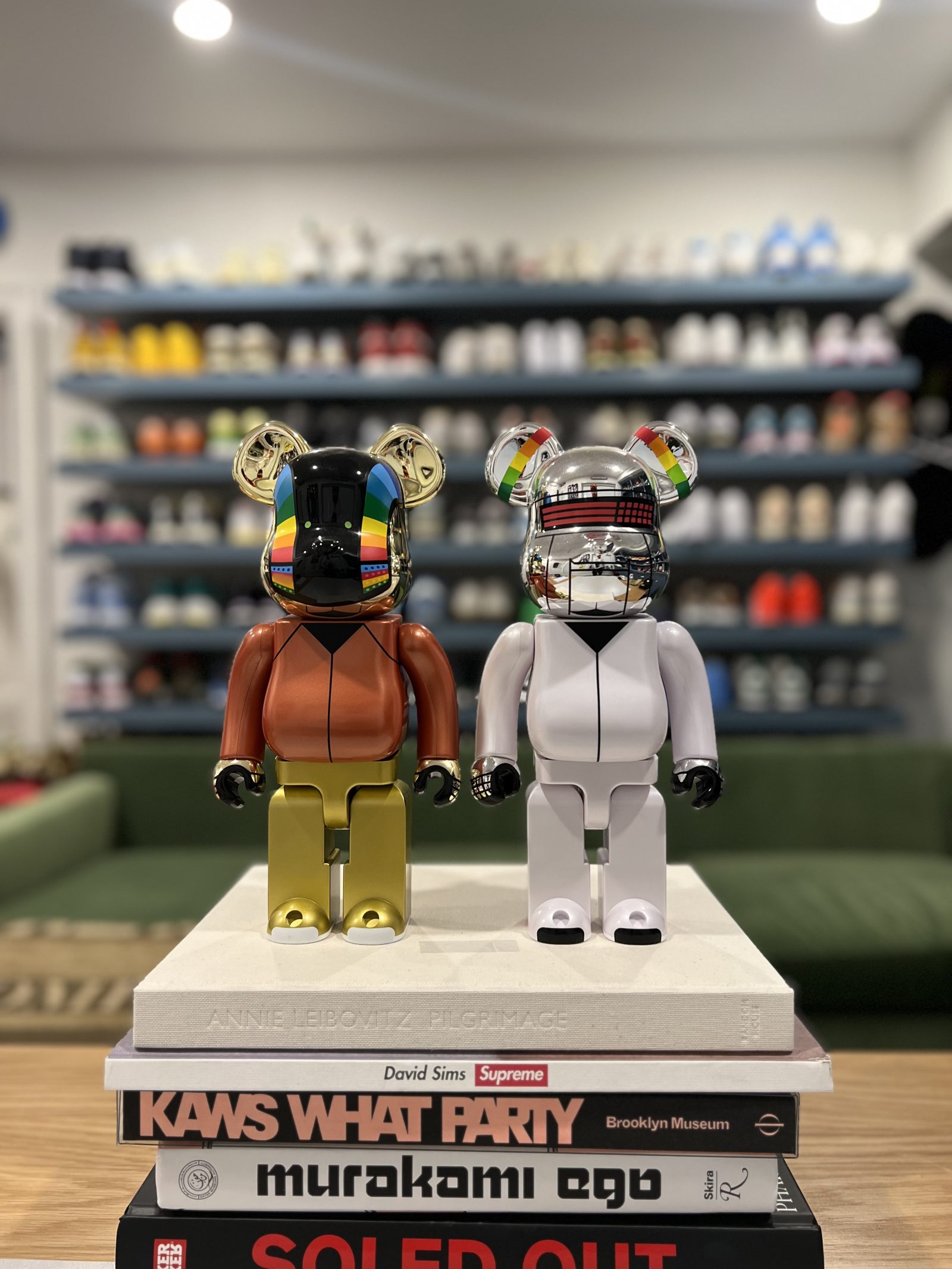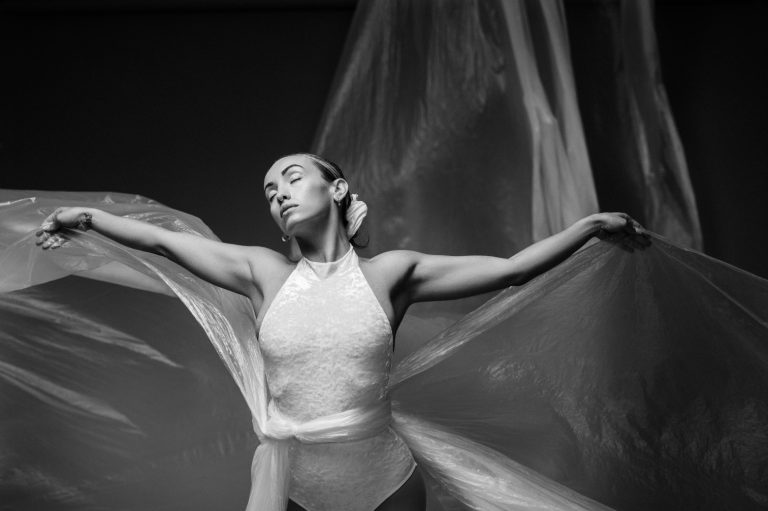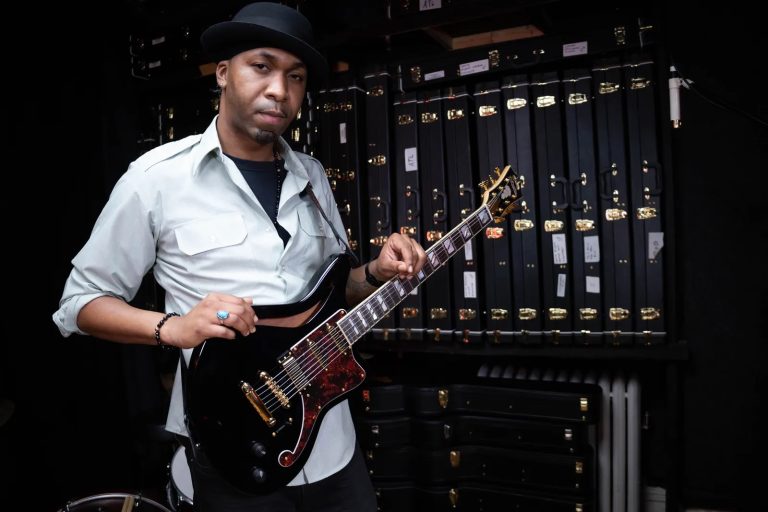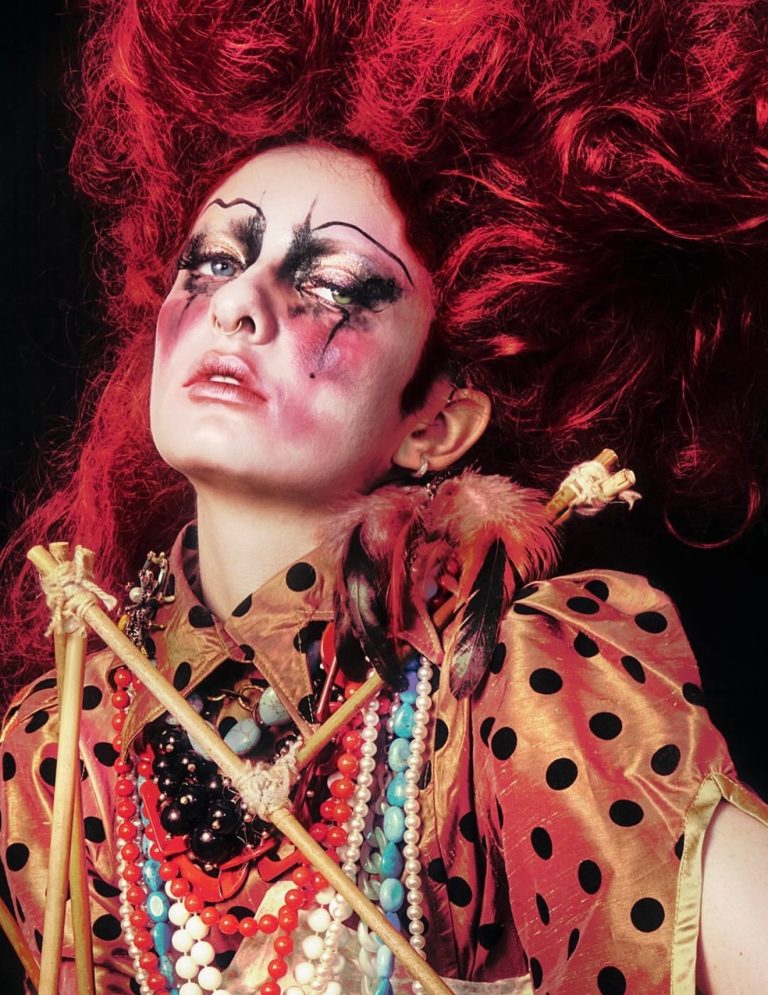Fifty years ago a young Jonathan Epstein fell in love with the first pair of Nike sneakers he laid eyes on. Who would have known those kicks would set into motion a SuperGl0rious passion that has now led to one of the most luxurious and prestigious streetwear collections in the world?
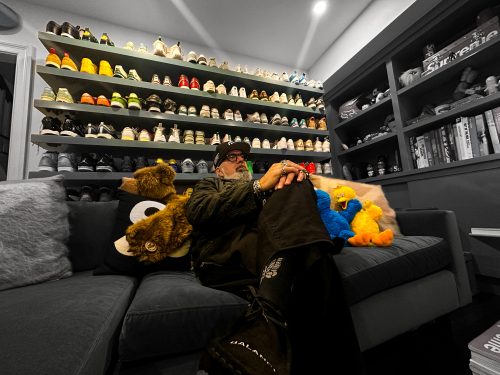
IT all began with a pair of sneakers in 1974.
At the tender age of 8, Jonathan Epstein had his heart set on the Nike waffle trainers he was staring at, prominently displayed in the window of Bruce Hamlin’s shoe store in downtown Marblehead. The Nike sneakers sat on a pedestal in the front bay window and was catching the eye of every local in town.
Nike was relatively new to the sneaker game, and the blue and yellow running shoes were -in Jonathan’s mind- simply magnificent.
He had never worn a pair of Nikes before. In fact, he hadn’t even owned sneakers at all until just a few months before, but instantly fell in love with the ones in Bruce Hamlin’s window.
“I had to wear black leather corrective shoes for many years as a young boy. I was born severly pigeon-toed and as an infant actually wore leg braces for a short time and was told by my othopedist that I may never be able to wear sneakers,” he reflects.
“Over time my feet began to straighten, but I couldn’t wear sneakers until I was eight years old. My first pair allowed me to experience the world on my two feet in a brand new way.”
Although he pined for those Nikes in the window, the aforementioned first pair had come from the Converse factory outlet in Malden which only sold factory irregulars.
His Dad bought him a pair of Jack Purcells that were very irregular.
“The left shoe, he explains. “Had a drooping blue line on the toe box so that sneaker always looked like it was frowning! I was happy to be free of corrective shoes, but that first pair was really awful from an aethestic point of view.”
Though he was new to the sneaker world, that vivid look of the Nike waffle design captivated him.
Now, almost 50 years later, he can describe them in perfect detail.
“They were a medium royal shade blue with a yellow swoosh and a black waffle bottom,” he says. “I’d walk by the store that sold them every day on my way to and from school.”
When Jonathan found out how much they cost, he approached his father, Arthur, a self-made Marblehead businessman who owned and operated several Midas garages, and asked if he’d buy them for him.
The shoes were over $50 retail and Arthur said no, but gave his son a counter offer: he could work for half of the money at one of the garages, and he’d match his earnings.
“Three months later, I had my half of the money and bought my first pair of Nikes,” Jonathan proudly says.
“From that point on, I was addicted to sneakers. I would stare at them like they were art. To this day, that’s how I look at sneakers – as wearable art.”
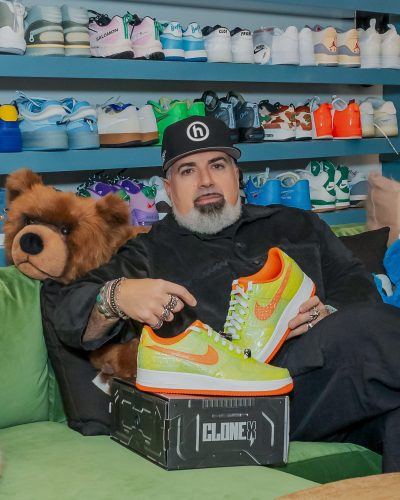
That passion for sneakers never faded and followed him to the Lower East Side of New York City, where Jonathan moved to work at Chase Manhattan Bank after graduating from Syracuse University.
“I ended up getting a job in corporate finance because my dad begged me not to go to grad school for psychology,” he says laughing.
Though a completely different industry brought him to New York, it turned out Jonathan was in the right place at the right time as the streetwear culture of the late 80s was emerging in his East Village neighborhood. He was living smack dab in the mecca for streetwear.
“Some of the most influential early streetwear stores had recently opened up all around me,” he recalls. “On weekends, I would roam around downtown dropping into new boutiques checking out clothing and footwear. I started to learn about the vast array of smaller independent brands that were heavily influenced by skateboarding culture.”
Jonathan spent all his free time at these stores, learning about apparel designers, sneaker releases and music. He also began to amass a sizeable streetwear collection of his own.
After two years at Chase Manhattan Bank he left New York and started a catalog company called Fallen Empire with Stephen Gaghan, who would go on to win the Academy Award in 2000 for best screenplay with the movie Traffic; and in 2005, would write and direct the film Syriana with George Clooney.
The two entrepreneurs had very little experience in the catalog business and -from producing catalogs, writing copy, designing clothing, shipping orders and answering phones- did everything themselves.
“What we didn’t know was actually beneficial because it was a massive amount of work. We were in completely over our heads,” remembers Jonathan. “But the ethos of that time was just ‘do it yourself.’ “So we did.”
His passion for the industry only grew as he began to see the process of clothing design. Steven and Jonathan purchased fabrics directly from mills, met with local pattern makers and seamstresses who worked with well known designers like Ralph Lauren and Tommy Hilfiger.
“These people were artists,” Jonathan says. “They are designing things that have long-lasting value.”
For three years, the Fallen Empire catalog company grew to a point where they had enough of a following to get the attention of – and ultimately sued by to the tune of $10 million – J. Peterman for look and feel infringement. The lawsuit was delivered to their office -above the Malden Midas Muffler shop- three weeks before Christmas.
Fallen Empire wasn’t quite big enough to weather the storm.
“Somehow, a rumor got out that our company was owned by The Gap,” says Jonathan. The rumor had evidently been started by J. Peterman’s son who had attended the same college as Stephen Gaghan in Kentucky.
“We had $30,000 in the bank and had just raised $100,000 to help grow our business and then we got sued,” Jonathan sighs.
The J. Peterman team felt very foolish when the truth came out in court, but the damage was already done. Both Jonathan and Stephen made their way to Los Angeles afterwards, pursuing very different paths, but remained close.
Jonathan landed several jobs in the entertainment industry, where the crossover between music and streetwear fashion really began to emerge.
“Streetwear was all the rage in LA at that time, Jonathan says. “ I would walk along Melrose Avenue and bump into famous actors, skateboarders and designers and they all had this vibe about them.”
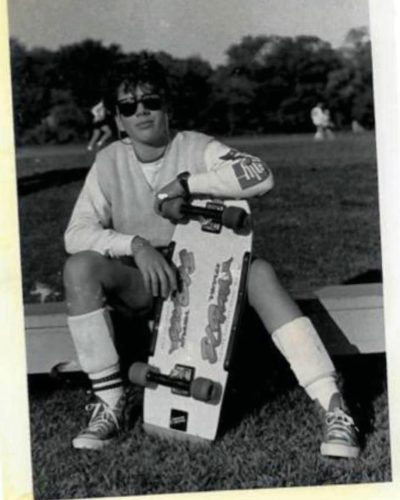
He was heavily influenced by some of the clients he was working with too: The Beastie Boys, Cypress Hill, House of Pain, Nirvana and Ben Harper to name a few.
Although his work with them was strictly contracts, he had inside access to the exploding LA fashion scene and was heavily inspired by it.
“A lot of their artistic expression was in what they wore,” he says.
As a result, his own personal streetwear collection began to really take off under this exposure and access. He ended up bringing this influence and passion for collecting with him when he returned to the East Coast.
Following a three year stint working with his father, Jonathan quit Midas Muffler for good and enrolled at Babson College to pursue his MBA.
After several entrepreneurial ventures, it seemed like the right move for him to make.
“I remember walking into Babson my first day and I was wearing wide legged skateboard jeans with a motocross jersey,” he recalls. “I also always wore a flat brimmed New Era Supreme baseball cap back then. My fellow classmates didn’t know what to make of me.”
As it turns out, Babson was the perfect place for entrepreneurs and Jonathan ended up securing a summer internship with Salomon Snowboards (eventually bought out by Adidas) in Georgetown, Ma.
He was part of a small team which helped the French company break into the US market and again got to experience the fashion of the top professional boarders.
“After working at Salomon I started to think about what I really wanted to do,” he says. “Because my father was an entrepreneur, that same spirit was in my DNA. My dad always encouraged and supported my ambitions, but made it clear I would have to make it happen on my own.
After Babson, he began consulting in Rhode Island where he worked with consumer goods giants Staples and Swiss Army Brands among others. When one of the senior partners at the firm asked if he’d like to spend weeknights and weekends looking to develop a new business he jumped at the chance to create another company.
After 16 months of research, the new partners decied to explore a concept for a health club that would offer “lifestyle” amenities that -at the time- were foreign in a full service health club. They named it FlexTime.
It was 1999, and young couples had expendable income, but not enough hours in the day to fit in a workout. Parents with young children were looking to exercise regularly, but they had very tight schedules to try and accommodate that.
“People were exhausting themselves trying to fit in all of their errands with their workouts,” explains Jonathan. “They would swing by the local drycleaner, then get their children from daycare and then grab a meal somewhere because they had no time to cook at home. After all of that, there simply wasn’t enough time to regularly go the gym.”
So Flex Time would offer onsite dry cleaning, daycare and healthy prepared meals all under one roof. Through his connections with Staples, they got the founder of Zoots to agree to open dry cleaning services at their first location; and then was able to secure a partnership with Bright Horizons daycare.
Shortly thereafter, a Somerville based prepared meals company and a ‘quick photo’ development firm were added to Flex Time as well. Film processing – twenty five years ago – was still time consuming as digital photos were still a ways in the future.
“We were creating this hub which would free up ‘flex time’ in your life,” he says smiling.
They raised over $1.3 million from angel investors and were on the verge of signing a lease for their first location on Speen Street in Natick when 9/11 changed everything.
“I remember working from home the day of the attack. I was reviewing lease documents and I had the television on. I watched Flight 11 crash into the North Tower. Within two hours every single investor pulled out of our deal,” says Jonathan.
Although initially feeling this was the end of a dream, Jonathan and his partner eventually began taking meetings to see if their concept still had legs post 9/11.
Through mutual friends, they met with one of the Equinox owners in New York and expressed the determination to get their venture back up and running.
“If you can find a location, I’ll switch out of my career,” the experienced gym operator told them.
Two months later, what eventually became their first Planet Fitness location was identified on Grove Street in Franklin. It was an existing gym that Jonathan and his partners bought and took over. They couldn’t call it FlexTime without all the other businesses housed under one roof, so they rebranded as Core Fitness instead.
“It was simply a gym,” says Jonathan. “No frills. Just a gym, but we had our start and were very motivated.”
The team eventually opened three Core Fintess locations, and before long heard of another new gym concept, making waves in New England, Planet Fitness.
“You should look into it,” a friend told Jonathan. “It’s only $10 a month, and the gym is always busy!”
Intrigued at how the numbers would work, Jonathan and his partners immediately began to look deeper into the Planet Fitness brand.
They discovered the business model had less overhead, but weren’t completely sold out of the gate. A year later, Planet Fitness had grown from 20 locations to almost 100 across the Northeast and had become the new rave in fitness.
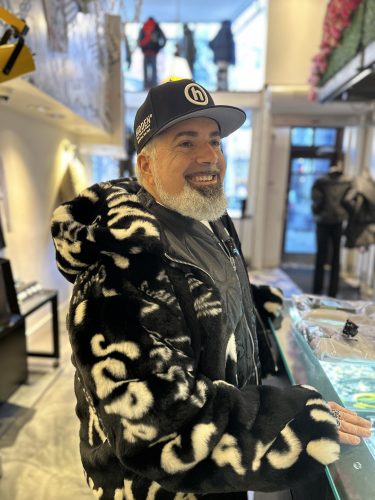
Jonathan and his partners met with Chris Rondeau, then CEO of Planet Fitness, and pitched him on signing an Area Development Agreement, which would be a first of its kind for PF.
An agreement was reached, and Jonathan and team got to work opening Planet Fitness locations across Massachusetts.
Over the next 18 years, they grew to 20 locations with over 400 employees. Then, in 2019, they decided to cash out and sell it all.
“We sold our business to a California based private equity group, closing on the deal six months before the pandemic,” Jonathan says.
Finally, the timing of tragic world events was on his side. Once he and his partners were liquid, he had time and resources to focus on the passion that never left him: collecting streetwear and sneakers.
Years earlier, living in Cambridge, Jonathan spent much of his free time in Harvard Square hanging out at a trendy upstart, Concepts, which was a small snowboard shop.
Jonathan spent endless hours chatting with its founder, Tarek Alaia, and shop manager ,John Roy, about the brands they were carrying and devoured all of the product catalogs in the store.
Tarek had a big vision for Concepts and as the store grew into the streetwear giant it is today, he provided Jonathan entrance into the world of art and design.
The Boston streetwear community was very small back then, and Jonathan was in the tight inner circle of its major players. The knowledge gained in these formative years, paid memorable dividends.
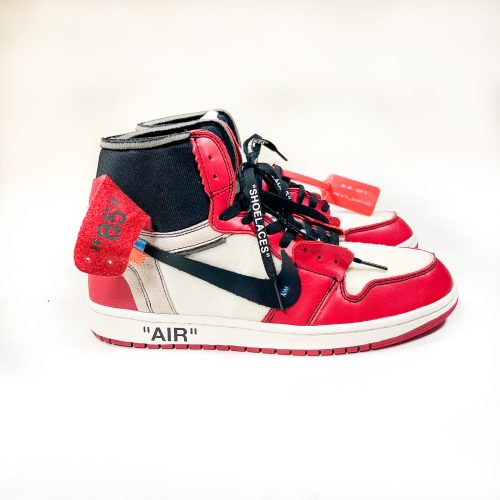
“I actually paid for my wife’s wedding ring by selling three pairs of sneakers,” he says. “The person who bought them was delayed for three hours because his dad open heart surgery and he kept calling me on a payphone, telling me ‘do not leave your gym I have the cash They’re putting my dad in the ICU and they’re giving me a few hours to leave.’”
True to his word, the buyer drove from his dad’s bedside in Boston to Jonathan’s Walpole gym location to pay him in cash for the sneakers. It was Christmas eve 1998, and Jonathan had just received the ultimate gift from Santa.
“Back then,” Jonathan explains. “You found out about what was hip and trending by going to stores, talking to people, studying magazines, and conducting organic research. People like Tarek at Concepts were really into art, graffiti and music…typically hip hop. We connected the dots on how urban youth culture was influencing fashion.”
The inspiration for Supergl0rious hit when Jonathan and his wife made the empty nester suburbs-to-city move in 2021. He was cataloguing all the clothes he’d collected over the years and realized his streetwear collection had overtaken their home.
“My wife would often find boxes of sneakers and clothing hidden in various closests and crawl spaces in our home,” Jonathan laughs. “I had taken over my kids closets and knew that moving into Boston meant I needed to find a space to warehouse my collection.”
While cataloguiong his collection in preparation for the move, the idea for a business began to take shape.
“It was like a trip through streetwear history,” he says. “I wanted to make my stuff available to the general public because the story of how I got these things and the way they make me feel changes my mood every time I pick them up and put them on.”
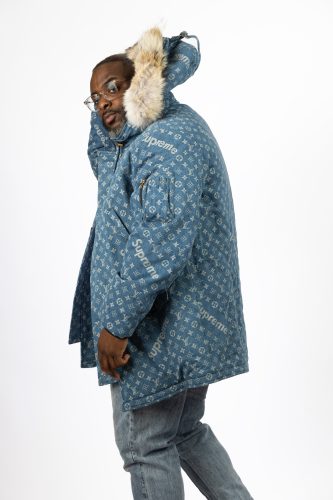
The name, Supergl0rious, was inspired by Jonathan’s grandmother, Ida Epstein.
“She loved to use the word ‘glorious,’” he says. “She used to say things like, ‘it’s a glorious day,’ or ‘isn’t that music glorious?’ all the time. But I felt like glorious wasn’t enough. So I chose the word SUPER because the word ‘super’ is used to make brands stand out, think ‘super sizing.’”
He also chose the number ‘0’ instead of the letter ‘o’ in the spelling of ‘glorious’ because “if you find something in your life that changes your energy level from zero to some number where you feel physically different, you’re going from Glorious to Supergl0rious.”
Everything in Jonathan’s collection has a unique story. How he found out about an upcoming release, how he acquired it and if and when he would wear it.. Jonathan is inspired to share the experiences and stories of his collection so other people who love streetwear can feel the “energy” of his unique collection.
Many of the pieces are some of the only ones of their kind ever made. His network within the collecting space has grown organically over three decades.
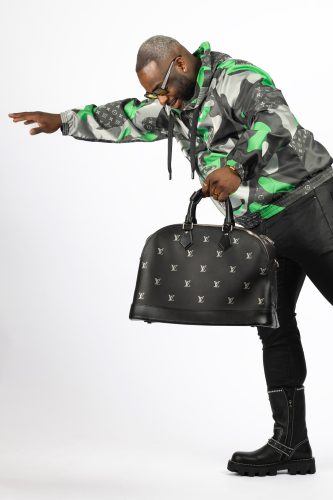
The collection itself grew from people he has crossed paths with professionally and personally.
The vision, Jonathan says, is to expand to people who don’t have visibility to this type of colllection otherwise, and to spend this part of his career sharing and learning from the next generation of collectors.
The true glory in collecting, he says, is focusing on and acquiring pieces with long lasting value.
“I have very specific tastes and curate every item I buy,” he explains. “My draw is to certain designers that keep pushing themselves to create new items which change the landscape of streetwear. Some designers create new trends and others just copy the leaders. Supergl0rious is focused on brands that continually step out and take chances.”
Be it a collarboration between Supreme and Louis Vuttion; Sacai and Nike; or Palace and Gucci; certain streetwear brands are willing to continually take risks to stand apart from the rest, Jonathan says.
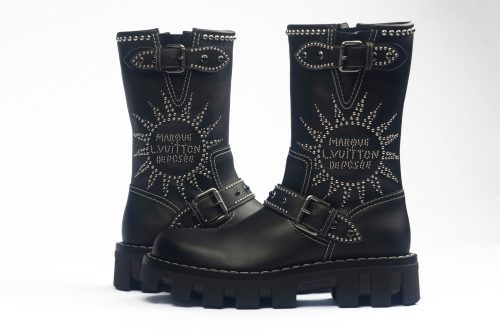
“I have my favorites from the past, but there are also new players making moves that are on my radar as well.”
He continues: “When brands take risks and do something new I take notice immediately. Then the real hard work begins. How to acquire these new streetwear pieces. Smaller companies have very limited production runs so supply is often limited and demand is usually overwhelming in the marketplace. Curating streetwear is a precise art. You have to be up for the challenge.”
Like many entrepreneurs, Jonatan admits the thrill of the hunt has been a big part in the building of Supergl0rious. “The process of acquiring coveted items still gives me an incredible adrenaline rush,” he gushes. “Figuring out how to attain the unattainable is half the battle.”
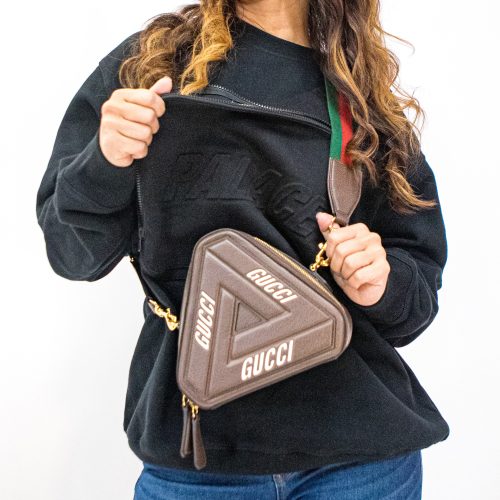
In their second full year of operation, Jonathan and his team recently launched their first webstore at www.supergl0rious.com and are selling limited items on their Instagram account.
“We are very strategic in how we showcase items,” he states. “I’m trying to educate a new generation on the history of streetwear and not just flooding the market with too many unique pieces at once. Now that we are sharing the collection with the world we hope we can make our customers go from being glorious to feeling Supergl0rious!”
Additionally, SuperGl0rious is partnering with select resellers and will even allow occasional private shopping to provide the ultimate luxury streetwear experience.
“The Boston streetwear community has really embraced SuperG,” Jonathan emphasizes. “I want to help our city become the place first place people think of when looking for streetwear.”
He concludes: “It’s a very busy and glorious time to be living in Boston and finally being able to turn my avocation into a vocation. I turned 58 in March, but that 8 year old who wanted those fresh blue and yellow Nikes will never die. I just want to share my love for streetwear with the entire world!”
Sounds like the life of a SuperGl0rious man.
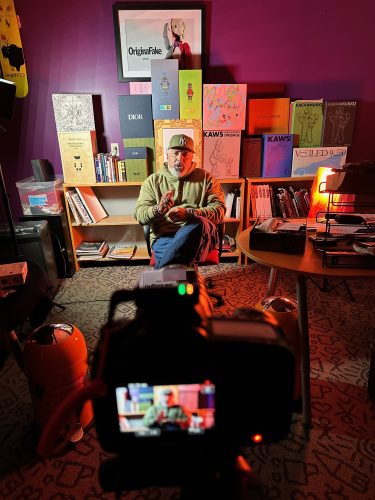
To stay connected with SuperGl0rious follow them on Instagram HERE.

